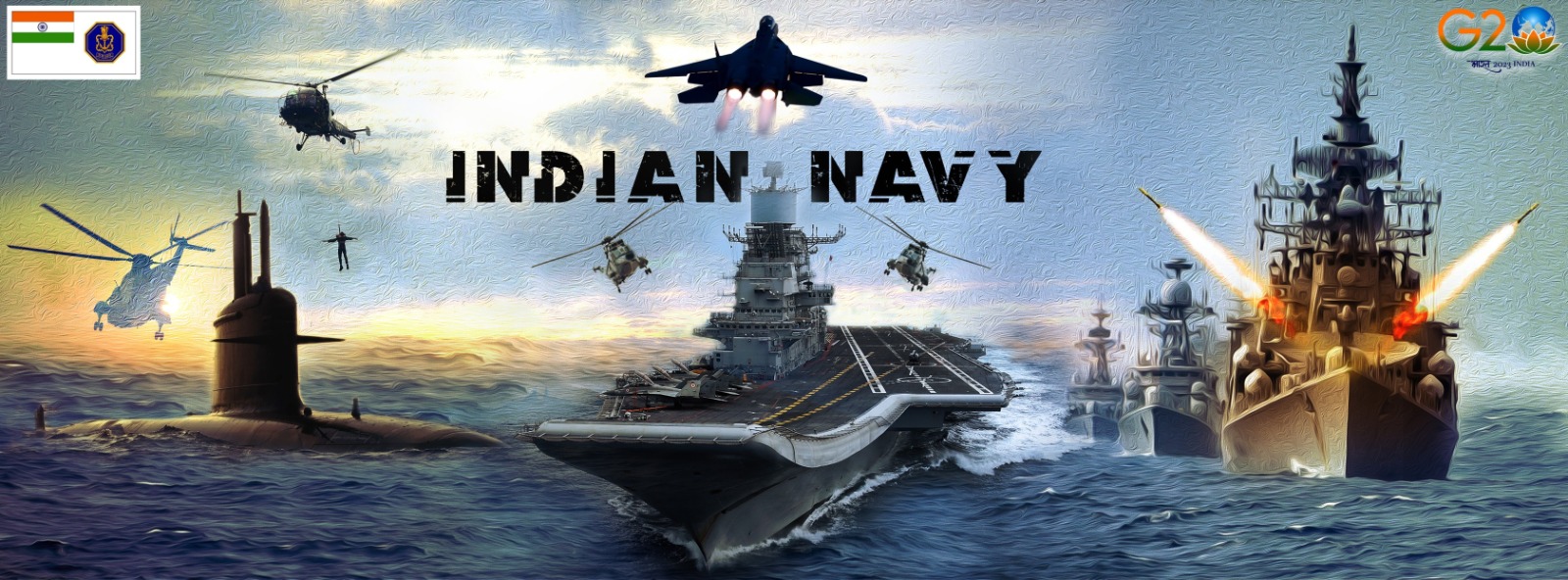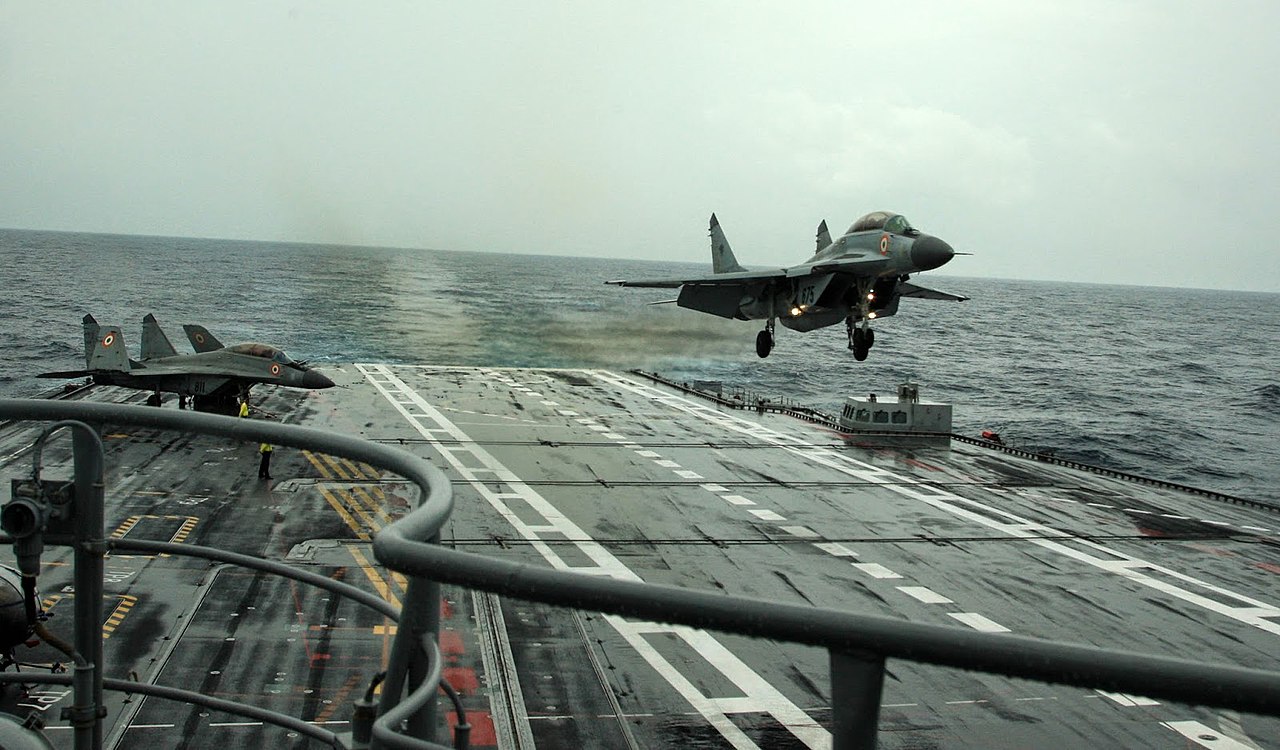The only port solely operated by the Indian Navy just got a boost in its bid to become the largest naval base east of the Suez Canal.
India’s aircraft carrier INS Vikramaditya (earlier known as Admiral Gorshkov) is based at INS Kadamba at Karwar on the western seacoast. Now, the base has India’s first ship-lift facility, which will lift submarines and warships for docking and undocking.
Closer to Pakistan, the base is akin to the US Navy’s sprawling Norfolk naval base in Virginia.
It gave the Indian Navy greater operational flexibility, which had to face significant security challenges for its Western fleet based in Mumbai in the 1971 India-Pakistan war. The shipping lanes of the commercial harbor of Mumbai were congested because of shipping traffic and fishing boats.
Project Seabird, christened INS (Indian Naval Ship) Kadamba, is the first operational base with a port controlled exclusively by the Navy. This allows the Navy to position and maneuver its operational fleet without worrying about the movement of merchant vessels.
The Navy’s other two operational ports are in Mumbai and Visakhapatnam, located in enclaves within commercial ports. Located on both coasts of India, the movement of warships amidst merchant vessels can be tricky in times of war.
Now, the Indian Navy, which has positioned itself as the first responder in the Indian Ocean Region, has the advantage as the base is closer to one of the world’s busiest sea lanes and is still out of the strike range of Pakistan’s fighter jets. It is a natural deep-water harbor with considerable depth and land availability that allows for the berthing of larger aircraft carriers.
The base can accommodate an aircraft carrier, destroyers, stealth frigates, and submarines. Its main functions include maintaining, overhauling, and repairing the surface and submarine fleets.
INS Kadamba is the only base in India that allows large ships like the 44,500-tonne Kiev class Soviet-built Admiral Gorshkov.
The largest naval port in terms of berthing facilities is Vishakhapatnam on the eastern coast, which allows berthing of around 50 ships. However, it does not have the required depth for ships like the indigenous aircraft carrier INS Vikrant, which has a displacement of around 40,000 tons. Also, the approach channel to the Visakhapatnam port is not straight, which makes maneuvering longer vessels tricky.
The INS Vikrant berthed at the Karwar naval base in 2023 for the first time.
In Kochi, restrictions in the depth of the rather narrow approach channel mean that dredging operations have to be undertaken every time an aircraft carrier comes in. The carrier also has to come in under light load conditions, dry-dock, and then be taken back.
In Mumbai, the shallow waters on either of the approach channels mean that an aircraft carrier cannot berth there. It will have to be anchored and logistics needs to be taken care of while transferring the crew, connecting service ducts for supplying fresh water, fuel, and power; and removal of the sewage.
On April 9, Indian Navy Chief Admiral R Hari Kumar inaugurated a 350m long major pier for Offshore Patrol Vessels (OPVs) and a residential accommodation at Naval Base Karwar.
These infrastructure developments are part of the ongoing Phase IIA of Project Seabird, which will accommodate 32 ships and submarines, 23-yard craft, a dual-use Naval Air Station, a full-fledged naval dockyard, four covered dry berths and logistics for ships and aircraft.
The pier would also provide various shore-based services, such as electrical power, potable water, chilled water for air conditioning, 30-tonne mobile cranes, and other domestic services to the ships.
The ship-lift facility is handy, especially when two or more ships require simultaneous dry-docking. In terms of cost, a ship lift (which comes with a transfer bay and a dry berth) is more cost-effective.

It is cheaper than a floating dock, and even though it is more expensive than a dry dock, the operating costs more than makeup for the expenditure. For the cost of one dry dock, three additional dry berths can be constructed.
Dry-docking a ship takes longer (six hours), and dry docks consume a lot more of the port’s waterfront. A ship-lift can also be used to hoist ships onto land during a cyclone rather than sending them out to sea.
INS Kadamba will allow naval ships to come in, be berthed, ship-lifted, dry-docked, repaired, and turned around – all crucial requirements if the Navy is to maintain the hull and structure of its 150-odd surface ships, support vessels, and submarines in a high state of seaworthiness.
Now, Phase II-B will commence, and once it is complete, INS Kadamba will be able to base 50 front-line warships and will be the biggest naval base east of the Suez Canal.

Air Power At The Strategic Naval Base
As part of the naval base, an air station is coming up at Alageri village near Ankola and is expected to be operational by 2025. The naval air station will come up on 1,328 acres.
The naval air station will accommodate Dornier-228-type aircraft, helicopters, unmanned aerial vehicles (UAVs), and more. INS Hansa, located at Goa, is very congested owing to a large number of civilian flights and naval flights, including training flights, using it. Once the Karwar naval air station starts functioning, several aircraft from INS Hansa can be diverted here.
The Navy is planning to construct a 2,000 m airstrip at the proposed naval air station for the landing of its aircraft.
- Ritu Sharma has been a journalist for over a decade, writing on defense, foreign affairs, and nuclear technology.
- The author can be reached at ritu.sharma (at) mail.com
- Follow EurAsian Times on Google News




